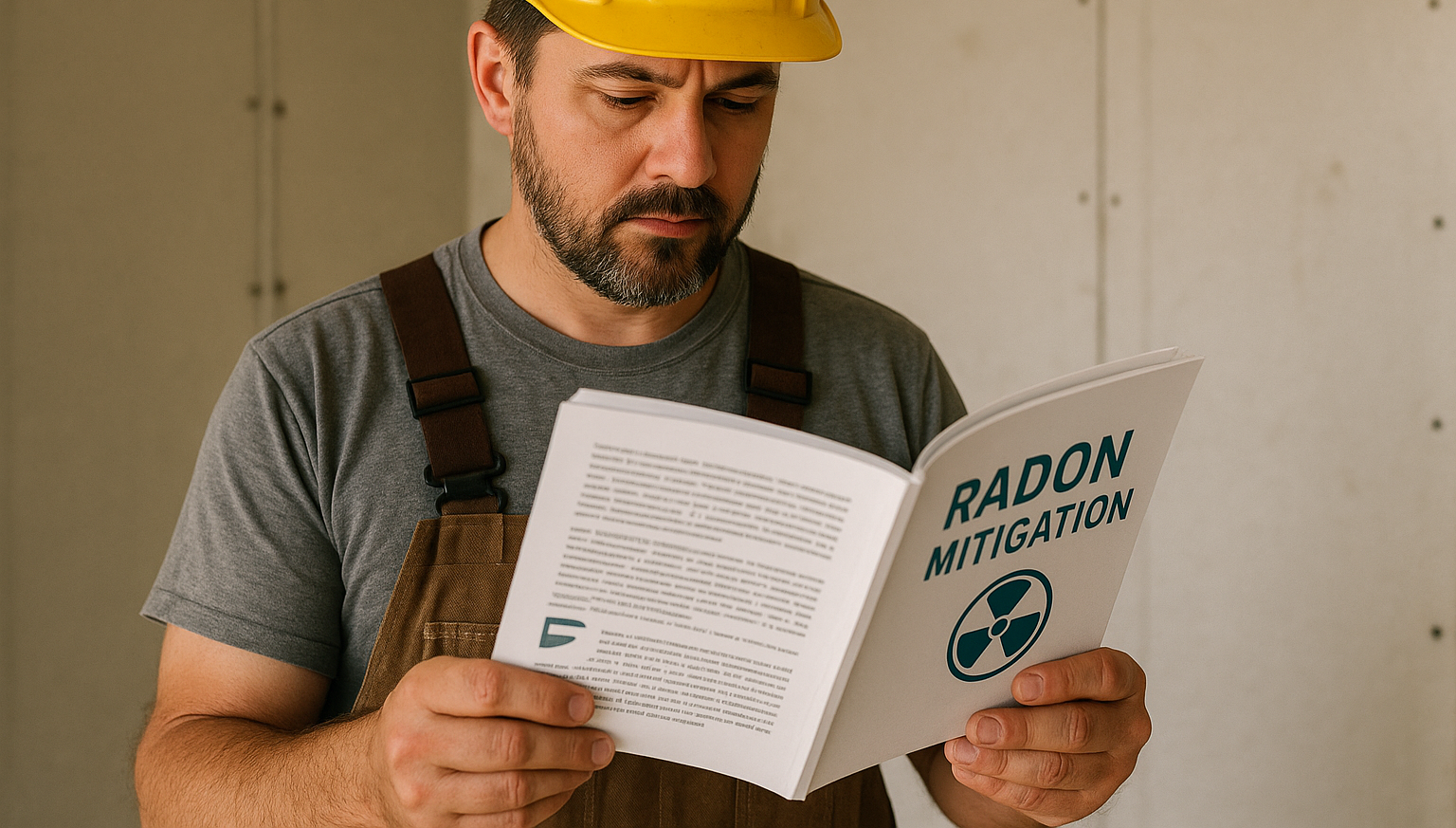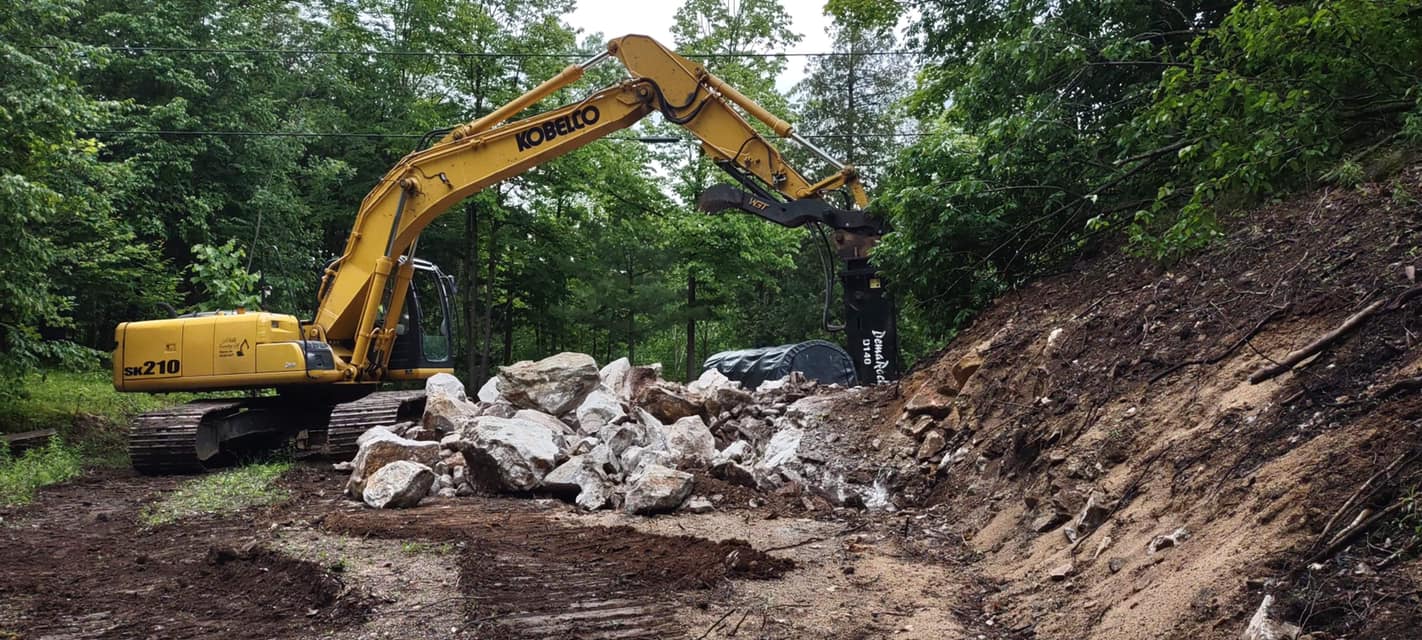Homeowners in Kingston are increasingly aware of radon, a naturally occurring gas that poses one of the most serious but invisible health risks inside Canadian homes. Health Canada identifies radon exposure as the second leading cause of lung cancer after smoking, a fact that has driven municipalities to update building standards and construction practices.
In Kingston, where local geology increases the likelihood of high radon levels, the municipality has adopted radon mitigation rules that directly affect how new basements are excavated and constructed. For anyone planning a new home, addition, or major renovation, understanding these rules is essential. They not only ensure compliance with building codes but also protect families from long-term health risks.
What Exactly is Radon?
Radon is a colourless, odourless, radioactive gas produced when uranium in soil and rock breaks down naturally. Outdoors, radon disperses quickly and is not considered a threat. Indoors, however, it can accumulate to dangerous levels, particularly in lower levels of homes such as basements and crawl spaces.
The Kingston and Frontenac region is particularly vulnerable because of its geology. The area lies on Canadian Shield bedrock rich in uranium-bearing minerals. Combined with clay-heavy soils that trap gas, this makes Kingston one of Ontario’s identified radon “hot spots.”
According to Health Canada, radon levels above 200 Bq/m³ require remediation. Long-term exposure above this threshold significantly increases the risk of developing lung cancer, even for non-smokers.
Kingston’s Radon Mitigation Rules
Recognizing the local risk, the City of Kingston and the Ontario Building Code have established radon mitigation rules that apply to new construction in high-risk areas. These rules require builders and excavation contractors to incorporate radon-resistant design features into all new basements and foundation systems.
Key requirements may include:
- Sealed foundation openings such as cracks, sump pits, and utility penetrations to prevent radon entry.
- Granular fill beneath slabs (often 100 mm of clear crushed stone) to create airflow for venting.
- Soil gas barriers or membranes installed under the slab to stop radon infiltration.
- Vent pipes or rough-ins that allow for passive or active radon mitigation systems to be added later if testing shows high levels.
These requirements are not optional. Builders and excavation contractors working in Kingston must follow these radon mitigation rules to pass building inspections and to ensure homes meet safety standards.

Why Radon Mitigation Rules Affect Basement Excavations
For excavation contractors, radon mitigation rules change how soil preparation and foundation work are approached. A basement excavation in Kingston is not just about digging to the right depth and creating stable foundations. It must also anticipate the flow of soil gases and provide ways to control or vent them.
At M. Riddle Excavating, we integrate these requirements into the earliest stages of excavation. A typical radon-conscious excavation may involve:
- Preparing a uniform gravel base that allows gases to move freely toward venting systems.
- Ensuring the excavation depth allows room for membranes or barriers beneath the slab.
- Coordinating with builders to rough in radon venting pipes before backfill.
- Grading around the foundation to promote surface drainage, which reduces pressure that forces soil gases inside.
By incorporating mitigation measures during excavation, homeowners avoid costly retrofits later. Retrofitting a radon system in an existing basement can involve cutting into concrete slabs, sealing leaks, and installing fans – far more expensive than integrating the same measures during initial excavation.
Prevention vs Retrofit Costs
One concern homeowners often raise is cost. Adding radon-resistant features during construction does carry an upfront cost, but it is significantly less expensive than retrofitting later.
Incorporating radon-resistant construction measures during a new build is typically inexpensive depending on the requirements.. In contrast, retrofitting a radon mitigation system can cost several thousand dollars depending on the complexity of the home’s layout and foundation.
From a financial perspective, radon mitigation rules save money in the long run. From a health perspective, they are priceless.
What Happens if Radon Mitigation Rules Are Ignored?
Failing to follow radon mitigation rules has immediate and long-term consequences.
- Inspection failure – New construction that does not include required radon-resistant features may not pass municipal inspection, delaying occupancy permits.
- Increased risk – Homes built without radon measures are more likely to have unsafe indoor radon levels, putting occupants at risk of lung cancer.
- Reduced resale value – More buyers today are aware of radon. Homes without mitigation systems may face reduced demand or lower sale prices.
Ignoring radon mitigation is not just a code violation, it is a health and financial liability.
Radon Mitigation and Broader Site Preparation
Radon mitigation fits into a larger picture of smart site preparation. Just as proper drainage prevents water infiltration and soil stability protects foundations, radon measures protect indoor air quality.
This ties directly to other excavation concerns such as grading and soil quality. For example, , understanding the composition of local soil affects how foundations and drainage systems are planned. Similarly, water movement and soil compaction are critical for long-term stability. Radon mitigation is another layer of foresight that keeps properties safe and sustainable.
Local Expertise Matters
While radon is a national health concern, local conditions make Kingston unique. The region’s geology and soil types demand careful planning and experienced contractors. Not all excavation crews are familiar with radon mitigation rules, but local specialists understand both the regulations and the practical construction methods that ensure compliance.
At M. Riddle Excavating, our work across Kingston, Napanee, and Frontenac includes projects where radon-conscious excavation has been a priority. By applying our knowledge of local soil conditions and building code requirements, we help homeowners achieve basements that are both safe and built to last.
Final Thoughts
Radon is invisible and odourless, but its effects are very real. Kingston’s radon mitigation rules ensure that new basements are constructed with protective measures in place, safeguarding both homeowners and future generations.
For anyone planning basement excavation, these rules mean more than just compliance with code. They represent an opportunity to create a healthier home, avoid costly retrofits, and increase property value. If you are planning basement excavation in Kingston or nearby, get in touch with us to discuss how radon mitigation can be built into your project.
At M. Riddle Excavating, we make radon mitigation part of every excavation project in Kingston and surrounding communities. By integrating these measures from the start, we help ensure your home is structurally sound, code-compliant, and safe for your family.
With proper planning, basement excavations do more than create space below your home – they provide a solid, healthy foundation for everything above it.


